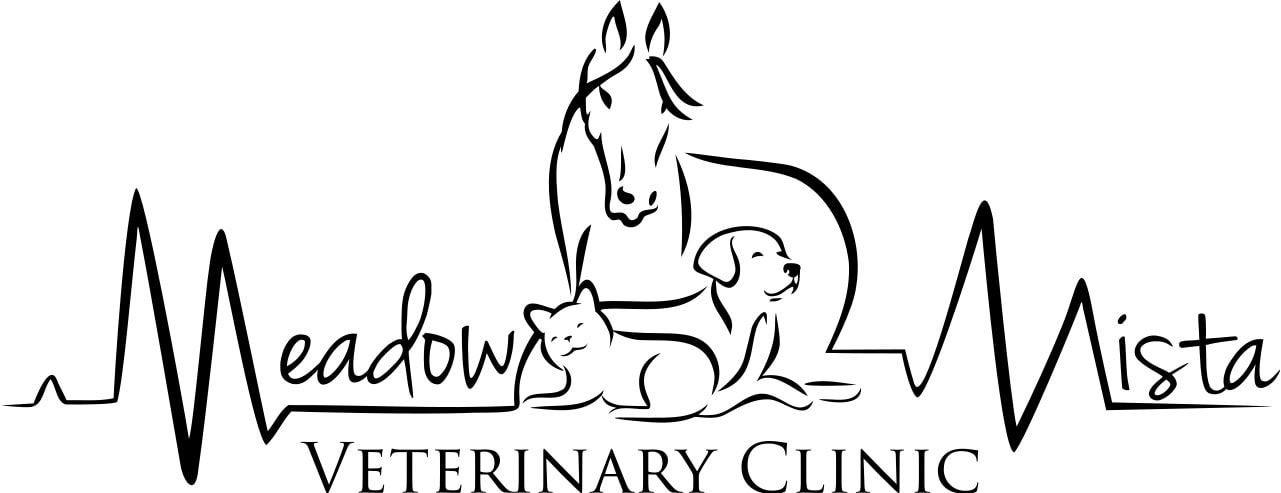Your dog has an upcoming x-ray (radiograph). You might have questions about the process during the appointment and how to prepare. In this post, our Meadow Vista vets will explain what to expect when taking your dog for an x-ray.
How do X-rays work?
X-rays are a form of electromagnetic energy carried by photons. When directed at your dog's body, the X-ray beam is absorbed by mineralized tissues like teeth and bones.
Soft tissues such as kidneys and liver absorb some X-rays, while air does not absorb any X-rays. Lead completely absorbs all X-rays.
During the procedure, your dog may need to be repositioned to capture the necessary angles. X-rays typically take about 10 minutes, and the digital images are instantly available for your vet to review.
X-rays are most useful for examining solid tissues and visualizing body areas with differing tissue densities.
What can vets diagnose with X-rays?
Veterinarians often use X-rays to examine your pet’s bones, internal organs, and tissues to diagnose issues such as bone fractures, swallowed foreign objects, bladder stones, and more. X-rays can help vets capture two-dimensional images and detect pregnancy, enlarged organs, and some tumors. An X-ray can easily show the silhouette of a heart, large blood vessels, and fluid in the lungs. Many abdominal organs can be examined, and any trapped air in the intestines can be detected.
Vets also commonly use X-rays to examine bones in limbs and the spine. However, joints may be more challenging to observe due to the density of soft tissues in ligaments or tendons. If x-rays of these areas are being taken, your vet will likely look for abnormal joint swelling, cavities, abnormal orientation, or positioning of bones. The examination may lead to a diagnosis such as cancer or heart disease.
X-ray technology is valuable in many circumstances. However, it cannot provide a detailed view of tissues, ligaments, and organs. It may also be more difficult to distinguish between organs if your pet has either very little body fat or is extremely obese. The inside of the skull cannot be properly observed with an X-ray since the bones in the cranium absorb all X-rays, preventing the visualization of brain tissue. Other diagnostic imaging tools, such as computed tomography (CT scans), may be necessary to detect structural abnormalities deep within the body, such as abscesses, some tumors, hematomas, occult fractures, and vascular changes.
Ultrasound is more suitable for diagnosing conditions such as kidney stones, pancreatitis, and abdominal pain or enlarged abdominal organs. This tool can also be used to perform needle biopsies when a cell sample from organs needs to be extracted for testing in the lab.
How can I prepare my dog for their x-ray appointment?
Your vet will often do an x-ray when you bring your pet in so they can have a closer look at an issue. For this reason, you don’t need to do any preparation beforehand. However, they will take a few minutes to explain the procedure and what they are looking for.
Will my dog be sedated during the x-ray?
Proper positioning is crucial to capturing a clear X-ray. Sometimes, we need to sedate animals to ensure they remain still and cooperative during the process. If your dog is calm, not in much pain, and can lie comfortably while the vet takes the image, sedation will not be necessary.
On the other hand, if your dog is restless, squirming, or in pain, the vet may recommend sedation. Other reasons for sedation may include the need to capture images of the spine, skull, or teeth, or if the dog's muscles need to be relaxed to obtain the clearest image possible.
Are X-rays safe for dogs?
While the use of X-rays is generally considered safe for dogs, radiation is involved, so X-rays are typically used only occasionally and generally as a diagnostic tool. In some cases, vets will use X-ray technology to glean information about a dog's pregnancy. However, other forms of imaging, such as ultrasound, could be used in that case.
If you're concerned about the use of X-ray technology and your dog's health, speak to your vet. Your veterinarian will be able to explain the risks versus the benefits in your dog's particular case so that you can decide whether to have an X-ray.
How much will my dog's x-rays cost?
The cost of your dog's X-rays can be influenced by various factors, such as the size of your pet, the specific area being X-rayed, whether sedation was administered, the type of clinic, the location of your veterinary clinic, and more. If you are worried about the expenses, requesting an estimate from your vet before moving forward is advisable.
Note: The advice provided in this post is intended for informational purposes and does not constitute medical advice regarding pets. For an accurate diagnosis of your pet's condition, please make an appointment with your vet.


